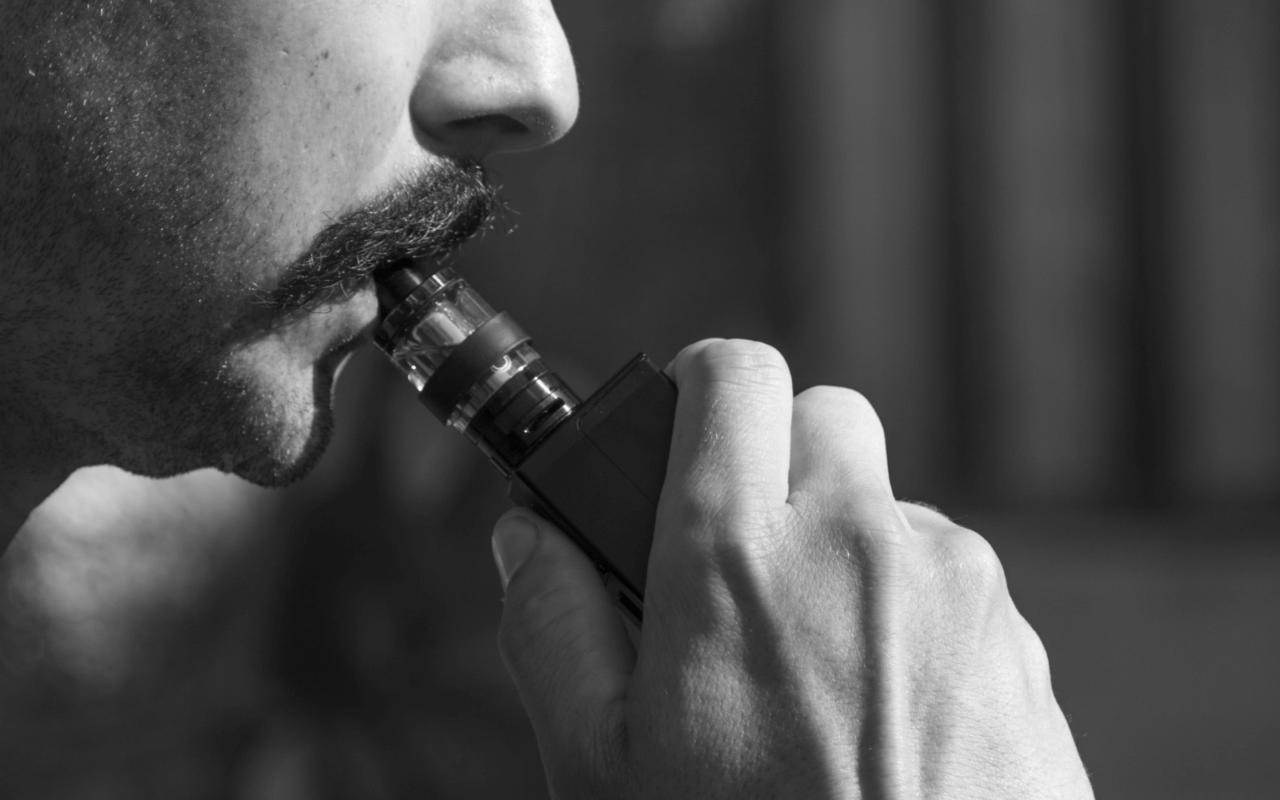Online Help: Am I Addicted to Vaping Quizzes
Vaping has surged in popularity over the past decade, often marketed as a safer alternative to traditional cigarettes. But beneath the clouds of flavored vapor lies growing concern—vaping addiction is real, and it’s affecting teenagers, young adults, and even longtime smokers seeking to quit. Recognizing the early signs of addiction is crucial to taking control of your health and habits. Online Am I Addicted to Vaping quizzes offer a quick and insightful way to assess your risk level and take the first step toward making informed decisions. This blog explores the dangers of vaping addiction, the benefits of self-assessment quizzes, and tips to take action, whether you’re facing addiction yourself or looking out for a loved one.
A Brief History of Vaping
When e-cigarettes first hit the market in the mid-2000s, they were marketed as a smoking cessation tool—offering smokers a less harmful way to satisfy nicotine cravings. However, the sleek designs, enticing flavors, and persistent advertising quickly turned vaping into a cultural phenomenon, particularly among teens and young adults. Today, vaping isn’t just about nicotine. Some devices use flavored liquids without nicotine, while others include THC and other substances. But whether or not nicotine is present, the habit itself and the potential for dependency remain major concerns.
Addictive Potential (Nicotine vs. Non-Nicotine Vapes)
Nicotine, one of the most addictive substances, is commonly found in vape liquids. It rewires the brain’s reward system, making users crave more frequent hits. On the other hand, non-nicotine vapes may not lead to physical dependency but can foster psychological addiction through habitual use and emotional reliance. Whether rooted in physical or psychological triggers, vaping addiction can spiral into compulsive behaviors that impact your health, finances, and personal freedom.
Why People Start Vaping
- Social Pressures: Among teens and young adults, peer influence plays a massive role in vaping habits. It’s often seen as a way to fit in or gain social acceptance, particularly in group settings where vaping is framed as “cool,” “trendy,” or even a harmless alternative to smoking. Social media also amplifies this pressure, with influencers and peers sharing content that makes vaping appear fun, stylish, or widely accepted. As a result, many young people feel encouraged to experiment or continue using vapes to maintain their social image.
- Stress Relief: Some turn to vaping as a makeshift coping mechanism, often citing stress, anxiety, or boredom as reasons to puff away. They may view vaping as a quick and accessible way to calm nerves, distract themselves from overwhelming emotions, or fill idle moments during the day. For many, it becomes a habitual response to life’s pressures.
How Addiction Develops
Like any addictive behavior, vaping addiction develops through reinforcing cycles that strengthen over time. When a user vapes, they experience a rush of pleasure or relief, often due to the nicotine, which creates a psychological connection to the habit. This positive reinforcement encourages repeated use, solidifying the behavior as a coping mechanism. Over time, specific triggers such as stress, social gatherings, or even boredom can intensify the dependency, prompting the individual to reach for their vape more frequently. As these triggers become more ingrained, quitting becomes increasingly difficult, requiring both physical and mental effort to break the cycle.
Vaping vs. Smoking Addiction
While traditional cigarette addiction centers around nicotine and the act of smoking, vaping adds an extra layer of complexity. Unlike cigarettes, vaping is often seen as more socially acceptable, making it easier for individuals to integrate it into their daily lives without judgment. It’s also more discreet, as vape devices are small, odorless, and easy to hide, allowing usage in places where smoking would be frowned upon. On top of that, the endless variety of flavors—from fruity to dessert-inspired—makes vaping particularly appealing, especially to younger users. These factors combined make quitting vaping equally, if not more, challenging than quitting traditional cigarettes, as it often feels less harmful while being just as addictive.
Recognizing the Signs of Vaping Addiction
If you’re wondering whether you or someone you know might be addicted to vaping, it’s important to pay attention to certain behaviors and patterns. Vaping addiction can develop slowly over time, often without the person realizing it, making it crucial to recognize the warning signs early. Addiction can impact both physical health and daily routines, so here are some critical signs to look out for that may indicate a growing dependency and the need for intervention:
Physical Signs
- Experiencing difficulty breathing or persistent, frequent coughing that might interfere with daily activities
- Feeling unusually tired without a clear reason, even after getting enough rest
- Persistent cravings for a vape, making it difficult to focus on other tasks or go about your day without feeling the urge to vape.
Psychological Signs
- Increased irritability, anxiety, or stress when unable to vape, often accompanied by a strong craving to use the device again
- Struggling to concentrate or stay focused throughout the day without relying on vaping
- Relying on vaping as a primary way to cope with difficult emotions such as stress, anxiety, or sadness, instead of addressing the root causes or exploring healthier coping mechanisms
Behavioral Signs
- Hiding vaping habits from others to avoid judgment, criticism, or unwanted attention
- Spending a significant amount of time or money on vaping, such as frequently purchasing vape products, experimenting with new flavors, or constantly needing to recharge or replace devices
- Gradually needing to use more of something over time to achieve the same effect as before, often due to the body building tolerance.
Take, for instance, Sarah, a 19-year-old college student. What started as a fun habit at social events became a daily routine, impacting her concentration during class and forcing her to spend nearly $70 a week on vape pods. These signs indicated clear dependency, pushing her to seek help.

Introduction to Online Am I Addicted to Vaping Quizzes
Online Am I Addicted to Vaping quizzes can be a helpful starting point for identifying signs of addiction. These quick and simple assessments are designed to ask targeted questions that encourage self-reflection on your vaping habits. By exploring aspects such as how often you vape, the reasons behind your use, and whether you feel dependent on it, these quizzes can offer valuable insights. While they aren’t a substitute for professional advice, they can help you better understand your relationship with vaping and whether it might be time to seek support or make changes.
Benefits of Quizzes
- Fast and accessible self-assessment tools
- Provide clarity on whether your habits indicate addiction
- Help identify if professional assistance is needed
How Our Online Quizzes Work
Our scientifically-designed Am I Addicted to Vaping quizzes offers accuracy and actionable insights. Here’s what you can expect:
- Quick Completion: Most quizzes are designed to be short and easy, typically taking less than five minutes to complete, making them perfect for busy schedules or quick breaks.
- Detailed Questions: These cover a range of in-depth topics, such as how frequently the product or service is used, the level of reliance users have on it in their daily lives, and the emotional triggers that influence their decisions. By exploring these areas, we gain a deeper understanding of user behavior and motivations.
- Efficient Methodology: Am I addicted to vaping quizzes are designed with an evidence-based scoring system that evaluates your responses to accurately determine your risk level—low, moderate, or high. This approach ensures that results are both reliable and actionable, giving you a clear understanding of where you stand and what steps you may need to take.
What Do the Results Mean?
- Low Risk: Your habits are manageable, and there’s no immediate cause for concern. However, it’s important to stay informed about the potential hazards of vaping, such as its impact on lung health and long-term effects that are still being studied. Staying mindful can help you make healthier choices moving forward.
- Moderate Risk: Your usage appears more consistent and may be edging toward problematic patterns. This could potentially impact your well-being or daily routine over time. It’s important to consider limiting your intake, reflecting on your habits, and making small adjustments to regain balance and prevent future issues.
- High Risk: Clear signs of dependency are present, such as difficulty functioning without the substance or behavior in question. It’s important to seek support from trusted individuals or consult with a professional for tailored recommendations and guidance on next steps.
Recommendations for Next Steps
If you’re in the moderate or high-risk category, taking proactive measures to address your vaping habits is essential for your health and well-being. Building a strong support network, whether through friends, family, or professional guidance, can make a significant difference in staying motivated. Combining this support with effective strategies, such as setting clear goals, identifying triggers, and exploring healthier coping mechanisms, can help you successfully kick the habit. Remember, with the right approach and resources, quitting vaping is not only possible but also a step toward a healthier future!
Lifestyle Changes
- Replace vaping with healthier stress relievers, such as regular exercise, which boosts endorphins and improves mood, or mindfulness practices like meditation and deep breathing to help calm your mind and reduce anxiety.
- Establish clear boundaries for when, where, and how often you vape to gradually reduce your usage over time. For example, you could limit vaping to certain times of day, avoid vaping in specific locations like your home or car, and set daily limits to track your progress.
Support Networks
Confide in trusted friends or family members who can provide encouragement and gently hold you accountable as you work through challenges. Consider joining online support groups where you can connect with others who understand your struggles and share valuable advice. Professional counseling is also a great option, offering expert guidance tailored to your needs. Remember, you’re never alone in your battle—there are always people and resources ready to support you.
Professional Resources
Consider reaching out to behavioral therapists, addiction specialists, or hotlines specializing in nicotine cessation for personalized support and guidance. These professionals are equipped with the knowledge and experience to help you better understand your triggers, develop coping mechanisms, and create a step-by-step plan tailored to your unique needs. They can provide strategies to manage withdrawal symptoms, recommend resources such as support groups or online tools, and offer consistent encouragement throughout your journey. Quitting nicotine is a challenging process, but with the right support system, you can overcome the obstacles and work towards building healthier, long-lasting habits.
Preventing Vaping Addiction
Encourage open and honest conversations about peer pressure, helping young people understand how to navigate challenging social situations. Promote awareness of the health risks and long-term consequences associated with vaping, including its addictive nature and potential harm to developing lungs. Education plays a crucial role in equipping individuals with the knowledge and confidence to make healthier choices, preventing harmful habits before they start and fostering a culture of informed decision-making.
Healthy Stress-Busting Alternatives
Can’t put down the vape because it helps you de-stress? There are healthier ways to unwind and manage stress. Try yoga to calm your mind and body, or explore meditation apps like Headspace or Calm for guided relaxation techniques. Keeping your hands busy can also help—consider creative hobbies like drawing, knitting, or even journaling to channel your energy into something productive and satisfying. These alternatives not only reduce stress but also promote a healthier lifestyle in the long run.
Conclusion
Whether you’re curious about your habits or already suspect an addiction, self-assessment tools like Am I Addicted to Vaping quizzes provide a guilt-free and judgment-free way to take the first step toward understanding your behavior. These quizzes are designed to help you reflect on your relationship with vaping and recognize any patterns that might indicate dependency. Awareness is the foundation of any meaningful change, and identifying the issue is a courageous and important step forward. Remember, there’s no shame in seeking help if you need it—everyone’s journey is different. If you’re ready to take that first step, take the quiz by clicking HERE and start regaining control over your choices. Your future self will thank you for taking action today.


